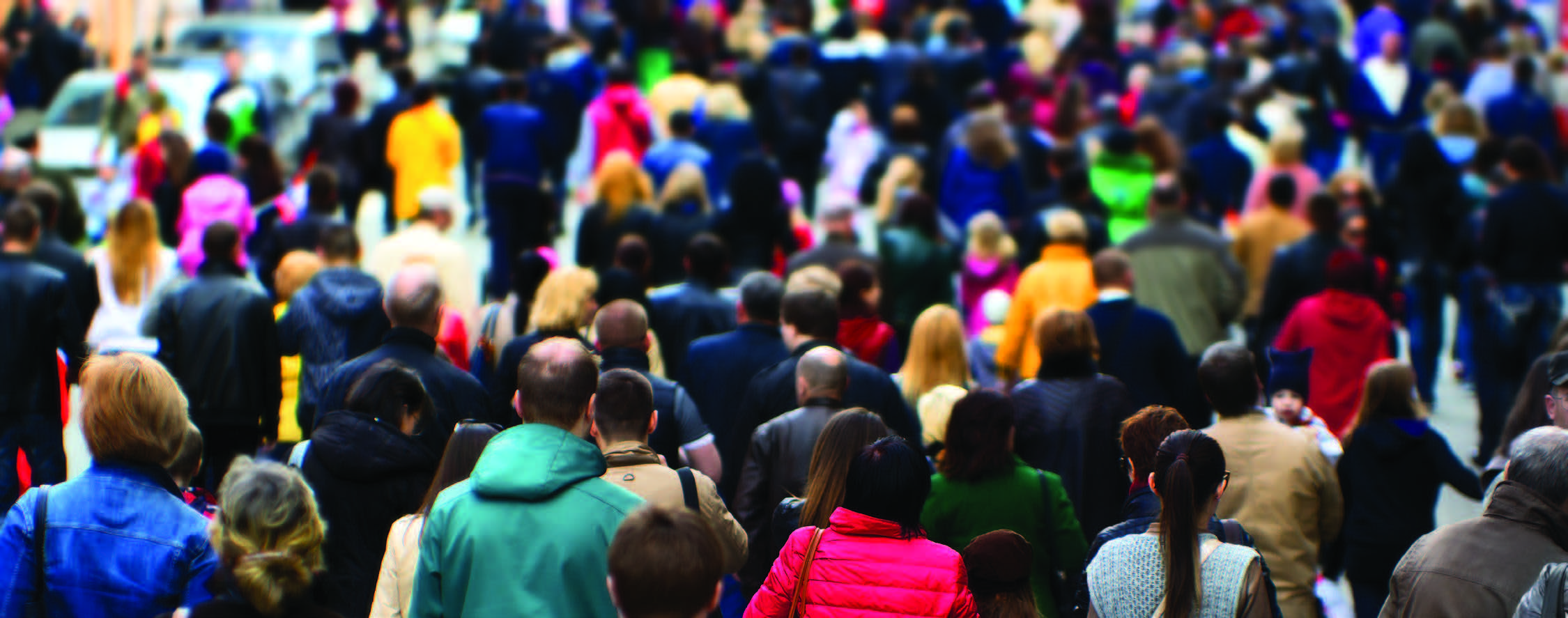An individual gains immunity to an infectious pathogen either by natural infection or by vaccination.1
A population can also develop resistance to an infectious pathogen when it achieves “herd immunity” or “community immunity.” This phrase – one we are hearing with increasing frequency – refers to a state reached when a large enough proportion of a population has become immune to a pathogen that ongoing transmission of it slows or halts.2
Immune individuals act as breaks in a chain of infection. If enough of these individuals are among an infected person’s contacts during the period of infectivity, transmissibility of the infection cannot be sustained. This confers the added benefit of potential protection to susceptible members of a population even if they themselves have no individual immunity.1, 3
What population immunity threshold is required to achieve herd immunity?
This varies from disease to disease, depending on biological and epidemiological factors. In the simplest model, the population immunity threshold is represented mathematically as
1 - (1/ Rₒ),
where Rₒ refers to the basic reproduction number of the pathogen.1 The basic reproduction number is defined as the average number of secondary infections introduced by a single infected person into a completely susceptible population. This equation shows that the population immunity threshold rises if the pathogen has a higher Rₒ, i.e., if it is more communicable.
A slight shift in the concept occurs when applying the above to a population where some individuals have pre-existing immunity. Under this circumstance, the population immunity threshold is
1 - (1/ Rₑ),
where Rₑ is the effective reproduction number of a pathogen in a population that has achieved partial immunity.3 This equation offers a closer approximation to the current realities experienced by most countries at this stage of the COVID-19 pandemic.
In a real world scenario, the Rₒ and Rₑ of a pathogen depends on its transmission dynamics and the population in which it circulates. In addition to the pathogen’s biological characteristics, other factors can include varying innate susceptibility to the infection from individual to individual, density and social structure of the population, and contact rates across demographic groups. Several parameters are in turn influenced by behavioral practices such as social distancing, personal hygiene etiquette, and mask-wearing. Consequently, the threshold for herd immunity varies both for different pathogens and for different populations responding to the same pathogen.2, 3,
Another consideration is the durability of the immunity established after natural infection or vaccination. Many infectious pathogens do not generate lifelong immunity in humans, therefore compromising the preservation of community immunity.3
How does this apply to SARS-CoV-2?
It is challenging right now to estimate the Rₒ for SARS- CoV-2. Using 12 studies, Liu and colleagues4 arrived at a mean and median estimated Rₒ of 3.28 and 2.79, respectively, within a range of 2 - 6. The corresponding calculated herd immunity thresholds ranged quite widely, from 50% to 83.3%, illustrating that such thresholds are conceptual. More detailed modeling would need to incorporate additional considerations, including population and behavioral dynamics, as well as transmission dynamics of the pathogen specific to the various region.1, 3
Achieving herd immunity against SARS-CoV-2
Whether herd immunity to SARS-CoV-2 can be successfully achieved depends on various considerations around its two main modalities: natural infection and vaccination.2
The immunity that can be triggered by a safe and effective vaccine would need to stop both disease manifestation and transmission. To do this, the vaccine would have to enable acquisition of persistent long-term immunity, otherwise revaccination will be necessary. Receptiveness to vaccination campaigns among populations is also a factor, as it could influence the immunity generated and would be critical to their success.3
Natural infection stimulates antibody production against SARS-CoV-2, but it is still not clear at this stage whether the resultant immunity acquired by those who recover persists beyond the short term, and if so, for what absolute length of time.3 Using Liu’s median Rₒ of 2.79, the threshold for herd immunity of SARS-CoV-2 is 64.15%. This means that just under two-thirds of populations would have to become immune either by surviving natural infection or by being successfully vaccinated for herd immunity to be achieved. At this point, according to serotracker.com,5 which calculates seroprevalence of populations in various regions based on available studies, estimated prevalence rates as of mid-August included an 8.6% national prevalence rate for the United Kingdom, a prevalence range of 2.7% to 6.4% for Spain, a range of 0.26% to 23% for different regions across the U.S., a 14% rate for Germany, and a 28.5% rate for Italy. Clearly, most countries are still far from approaching herd immunity thresholds.
In the absence of an effective vaccine, a still higher COVID-19 infection rate would theoretically be required to enable the world’s population to move toward achieving herd immunity. The cost of the associated mortality, morbidity, and possible resultant long-term complications, as well as the overwhelming burden on healthcare systems, could be challenging worldwide.
Conclusion
Understanding and applying the principles of herd immunity will be an essential component of bringing the COVID-19 pandemic to an end. While there may be barriers to establishing herd immunity, it is hoped that effective treatments that reduce COVID-19-related mortality, as well as the development and deployment of vaccines that can confer durable and long-lasting immunity, will successfully achieve this goal.


